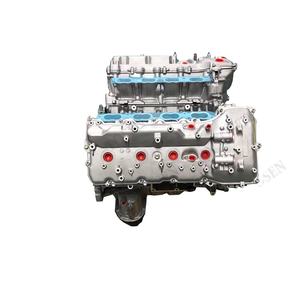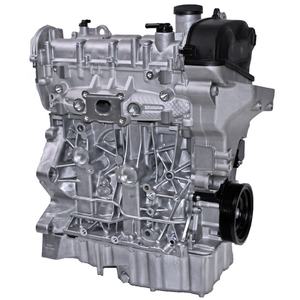Opel Corsa Engine: Common Issues and Just How to Deal with Them
Opel Corsa Engine: Common Issues and Just How to Deal with Them
Blog Article
Checking Out the Inner Workings of a Compact Vehicle's Engine System
As motorists, we often take for provided the elaborate procedures that occur within the boundaries of our vehicle's engine system. In this expedition of a compact automobile's engine system, we will certainly decipher the internal workings of this mechanical harmony, dropping light on the secrets that drive us onward on our daily trips.
Burning Process Introduction
The burning process in a small vehicle's engine system is a vital device that efficiently converts gas into energy to power the automobile. This procedure happens within the combustion chamber of the engine, where gas and air mix, spark, and produce regulated explosions. The burning procedure includes four major phases: consumption, exhaust, power, and compression.
Throughout the consumption stage, the piston relocates downward, reeling in a combination of air and fuel right into the burning chamber. The following stage, compression, entails the piston moving upwards, compressing the air-fuel combination to raise its potency. Ultimately, in the power stage, the spark plug ignites the compressed mixture, causing a rapid development of gases that forces the piston pull back. This downward motion creates the power needed to drive the vehicle. In the exhaust phase, the burnt gases are expelled from the combustion chamber via the exhaust valve, preparing the chamber for the next cycle. This cyclic burning procedure is basic to the operation of a portable vehicle's engine system, making certain efficient energy conversion for propulsion.
Piston and Cyndrical Tube Interaction

The piston's exact fit within the cyndrical tube is necessary for preserving optimum compression and protecting against power loss throughout burning. Limited clearances in between the piston and cyndrical tube wall surfaces make sure reliable securing, enabling the piston to relocate smoothly without enabling gases to leak past. Appropriate lubrication is also important to decrease friction and wear in between these parts, improving durability and performance.
Additionally, the design and products made use of in making the piston and cyndrical tube effect engine performance and longevity. Modern engines often use light-weight yet long lasting materials like light weight aluminum alloys for pistons and cyndrical tube liners to decrease inertia and enhance thermal efficiency. On the whole, the unified interaction in between the piston and cyndrical tube is essential to the engine's functionality and total efficiency.
Fuel Injection System Capability
Fuel shot systems in small car engines play a crucial role in exactly providing gas to the combustion chamber for controlled and reliable ignition. The fuel injection system operates by injecting gas into the burning chamber at the ideal minute during the engine's procedure (opel corsa engine). This accurate timing ensures that the gas mixes uniformly with the air for proper burning, leading to enhanced fuel effectiveness and decreased exhausts
There are mainly 2 sorts of gas shot systems used in small vehicle engines: port gas shot (PFI) and direct gas injection (DFI) PFI systems infuse a knockout post fuel into the consumption port before the consumption valve, while DFI systems infuse fuel directly into the burning chamber. Both systems have their benefits, with DFI providing much better fuel atomization and PFI offering a more economical solution.
Comprehending Engine Cooling Systems
Reliable operation of a small automobile's engine relies heavily on the performance of its cooling systems. Engine air conditioning is vital to protect against getting too hot, which can result in severe damages and lowered efficiency. The air conditioning system in a compact car normally contains several components collaborating to control the engine temperature level. One essential part is the radiator, which utilizes coolant to take in warm from the engine. As the warm coolant moves via the radiator, it launches warmth right into the air, cooling off prior to going back to the engine. The water pump flows the coolant via the engine and radiator, making certain a consistent flow to regulate temperature level. Additionally, the thermostat helps control the coolant flow to maintain optimum engine temperature level. Some lorries additionally have cooling fans that trigger when additional cooling is needed, such as during heavy traffic or heat. Understanding these engine air conditioning mechanisms is essential for keeping the efficiency and long life of a portable lorry's engine system.

Exhaust System Parts Explained
The ideal functioning of a portable automobile's engine cooling devices relies on a complementary system referred to as the exhaust system, which comprises numerous necessary elements for guaranteeing reliable discharges and engine performance. The exhaust system consists of components such as the exhaust manifold, catalytic converter, muffler, and tailpipe. The exhaust manifold accumulates Read Full Article exhaust gases from the engine's cyndrical tubes and paths them to the catalytic converter. The catalytic converter then transforms hazardous toxins in the exhaust into much less damaging emissions prior to releasing them via the muffler and tailpipe.
One vital component of the exhaust system is the oxygen sensor, which checks the oxygen levels in the exhaust gases to help control gas consumption and make sure optimal engine performance. opel corsa engine. In addition, the resonator may be present in some exhaust systems to minimize sound levels. In general, the exhaust system plays an essential role in keeping engine efficiency, decreasing unsafe emissions, and guaranteeing a quieter driving experience for small lorry proprietors

Final Thought
Finally, the small automobile's engine system is an intricate combination of elements that collaborate to promote the combustion process, transform gas right into energy, and remove waste gases. Comprehending the internal operations of the engine system, consisting of the piston and cylinder interaction, fuel shot system, engine air conditioning mechanisms, and exhaust system official site components, is important for preserving optimum efficiency and performance of the vehicle.
The combustion process in a small lorry's engine system is a critical mechanism that efficiently converts fuel into energy to power the vehicle.Fuel shot systems in portable lorry engines play a critical duty in exactly supplying gas to the combustion chamber for regulated and efficient ignition.There are mostly 2 types of gas injection systems utilized in small lorry engines: port fuel shot (PFI) and straight fuel injection (DFI) Comprehending these engine cooling mechanisms is essential for keeping the performance and durability of a compact vehicle's engine system.
The optimum performance of a portable automobile's engine cooling mechanisms depends on a complementary system understood as the exhaust system, which comprises numerous essential parts for making certain effective discharges and engine performance.
Report this page